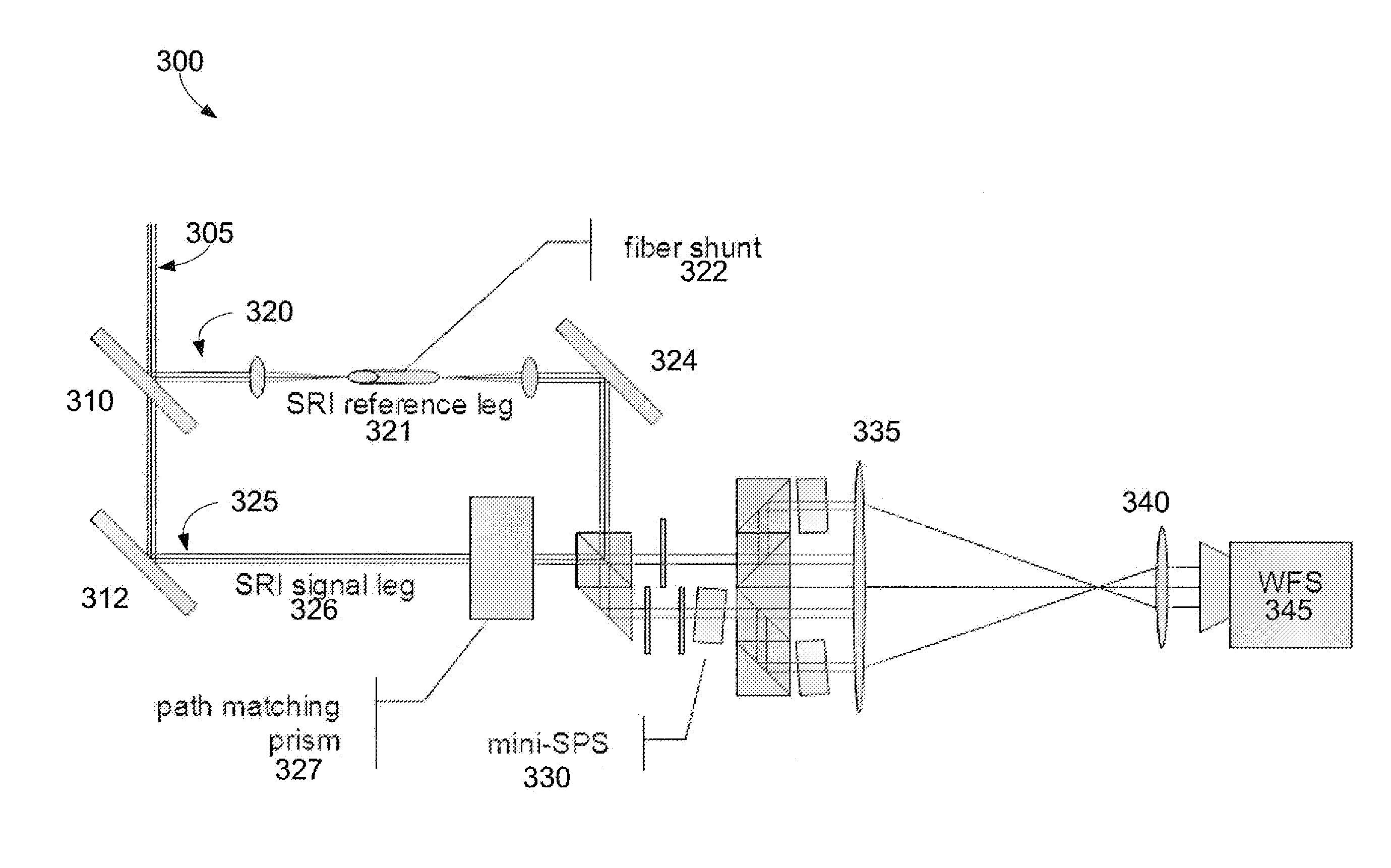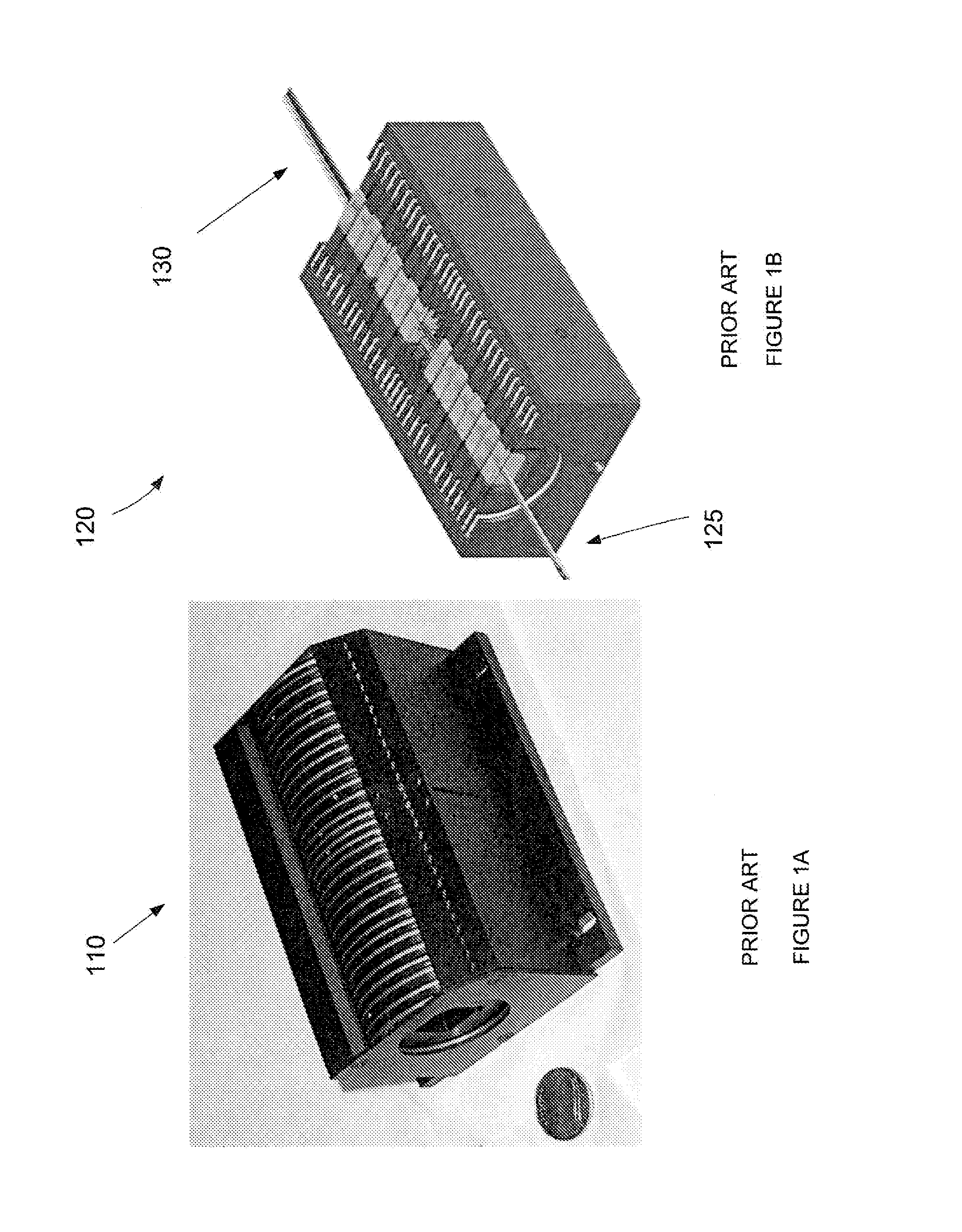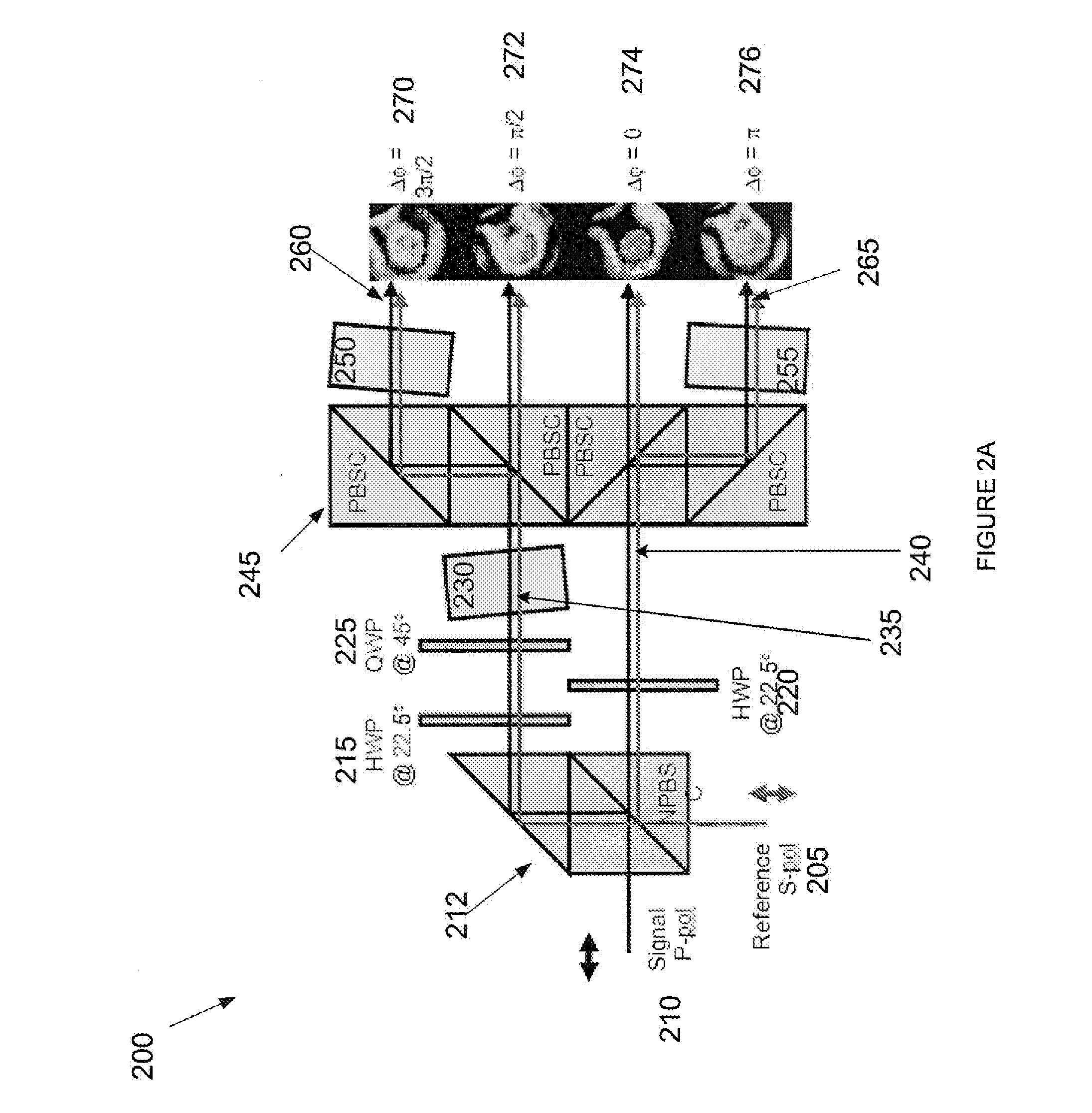System and Method For a Self-Referencing Interferometer
a self-referencing and interferometer technology, applied in the field of interferometers, can solve the problems of limiting the implementation of interferometers, the number of technical limitations of prior art interferometers, and the size of the components is large, so as to improve the beam quality, reduce the size and complexity of components, and improve the spatial phase shifting assembly
- Summary
- Abstract
- Description
- Claims
- Application Information
AI Technical Summary
Benefits of technology
Problems solved by technology
Method used
Image
Examples
Embodiment Construction
[0026]The invention is directed to components and methods for improved interferometers. Although the exemplary embodiments of the improved interferometers will be described in the following text and the associated figures, those skilled in the art will recognize that the exemplary embodiments can be modified in various ways within the scope of the invention. For example, the exemplary embodiments described herein include certain conventional components such as lenses and mirrors. Those of skill in the art will recognize that various different types of lenses and mirrors can be substituted for the conventional components described herein. Those of skill in the art also will recognize that the configuration of the conventional lenses and mirrors described herein can be modified within the scope of the invention.
[0027]Turning to FIG. 2A, an exemplary embodiment of a miniature spatial phase shifter 200 is illustrated. The miniature spatial phase shifter 200 improves upon several of the ...
PUM
 Login to View More
Login to View More Abstract
Description
Claims
Application Information
 Login to View More
Login to View More - R&D
- Intellectual Property
- Life Sciences
- Materials
- Tech Scout
- Unparalleled Data Quality
- Higher Quality Content
- 60% Fewer Hallucinations
Browse by: Latest US Patents, China's latest patents, Technical Efficacy Thesaurus, Application Domain, Technology Topic, Popular Technical Reports.
© 2025 PatSnap. All rights reserved.Legal|Privacy policy|Modern Slavery Act Transparency Statement|Sitemap|About US| Contact US: help@patsnap.com



